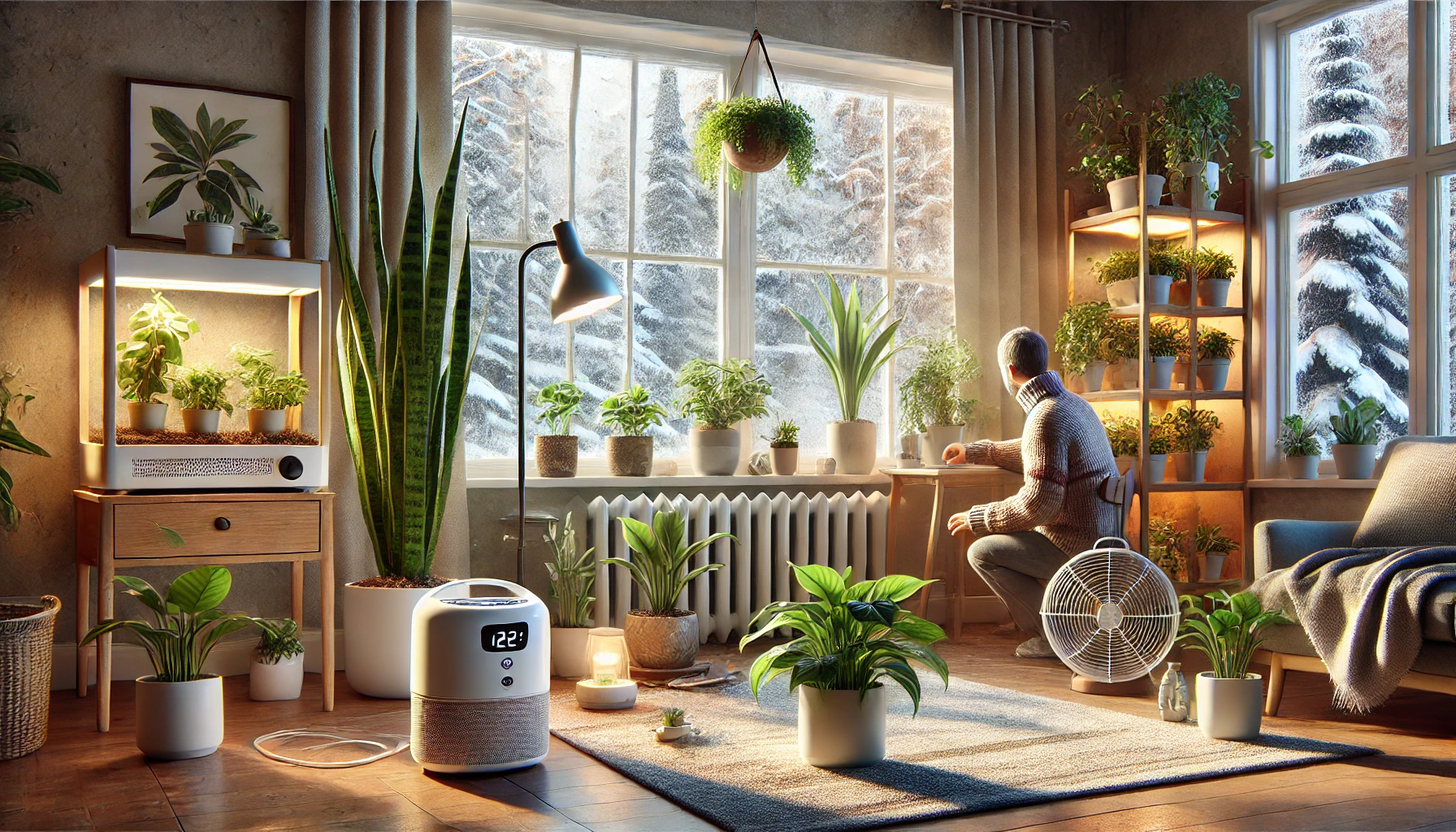When the days grow shorter and the temperature drops, your houseplants feel it too. While we cozy up under blankets and turn on the heater, indoor plants often struggle with dry air, reduced light, and cooler conditions. But winter doesn’t have to be a death sentence for your greenery.
With a few seasonal adjustments, you can help your plants not only survive the winter, but stay vibrant until spring returns. A little attention now can prevent yellowing leaves, root rot, or pest problems later.
Understand What Changes in Winter
Even indoors, the environment changes significantly in the winter months:
- There’s less natural light due to shorter days and overcast skies
- Indoor air becomes drier because of heaters
- Temperatures drop, especially near windows and doors
- Many plants naturally slow their growth during this season
Knowing this, your care routine should shift from active support to gentle maintenance.
Adjust Your Watering Routine
Most houseplants require much less water in winter than during the growing seasons of spring and summer.
Tips:
- Always check the soil before watering. The top inch should be dry before you add more.
- Reduce watering frequency by 30–50%, depending on your plant and indoor humidity.
- Be extra careful with plants in low light, which dry out more slowly.
- Avoid watering late in the day — cooler temperatures at night can lead to root rot.
Overwatering is the number one winter killer of indoor plants.
Increase Humidity
Indoor heating systems can dry out the air, leaving your plants with brown tips, curled leaves, or stunted growth.
Ways to boost humidity:
- Use a humidifier near your plants
- Group plants together to create a microclimate
- Place pots on trays filled with pebbles and water (without letting the pot sit directly in the water)
- Mist occasionally (only if your plant enjoys it — avoid succulents or fuzzy-leaf plants)
Aim for 40–60% humidity for most tropical indoor plants.
Move Plants Away from Drafts and Heaters
Cold air from windows and hot air from radiators can shock your plants.
To protect them:
- Move pots at least a few inches away from windows at night
- Keep plants away from heaters, fireplaces, and forced-air vents
- Use thermal curtains if your home loses heat quickly
- Avoid sudden temperature changes — they stress your plants
If your plant is drooping or dropping leaves, check for cold exposure.
Give Them More Light
Shorter days mean your plants may not be getting the light they’re used to.
What to do:
- Move plants closer to windows (without touching cold glass)
- Rotate plants weekly so all sides receive light
- Clean windows and leaves to maximize light exposure
- Supplement with grow lights if needed, especially in darker homes or rooms
South- and west-facing windows are best in winter.
Pause Fertilizing
Most houseplants go into a natural semi-dormant state in winter. This means:
- Less growth
- Slower nutrient absorption
- No need for extra feeding
Avoid fertilizing during winter unless your plant is actively producing new growth (like herbs or flowering varieties under grow lights). Over-fertilizing now can burn the roots.
Resume feeding in spring when new growth appears.
Dust the Leaves
Plants already get less light in winter — don’t make it worse by letting dust block their leaves.
Use a soft, damp cloth or microfiber towel to gently wipe large leaves. For smaller plants, a quick rinse under lukewarm water works well.
Clean leaves help plants photosynthesize efficiently and look their best.
Check for Pests
Winter is prime time for certain pests like spider mites, scale, and mealybugs. They thrive in warm, dry environments and may go unnoticed without regular inspection.
What to do:
- Check the undersides of leaves and stems weekly
- Look for sticky residue, webbing, or tiny bugs
- Isolate any affected plants immediately
- Treat with neem oil or insecticidal soap if needed
Healthy plants in the right conditions are much less likely to attract pests.
Support Dormant Plants, Don’t Push Growth
It’s normal for many plants to:
- Drop a few leaves
- Stop growing
- Look a little dull
Don’t panic. Just keep them comfortable and wait until spring. Avoid repotting or heavy pruning during this time unless absolutely necessary.
Final Thoughts: Rest and Reset
Winter is a time of rest — for you and your plants. While they may not be growing fast or blooming right now, they’re conserving energy, just like nature intended.
Your role is to support this rest by adjusting your care routine: less water, more humidity, and protection from temperature swings. With these simple steps, your indoor garden will wake up in the spring healthier than ever.
So let your plants nap — and know that quiet months now lead to vibrant growth later.
